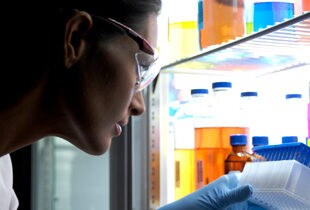Digital PCR technology is rapidly gaining popularity due to its sensitivity and precision, particularly in oncology research applications such as rare mutation detection. You may have noticed a recent news article in Genome Web titled “Common Digital PCR Sample Prep Step Could Cause False Positive Mutation Detection” that reported false positive mutation detection when digital PCR protocols that utilize DNA fragmentation in the workflow are used.
A newly published study “Mutant DNA quantification by digital PCR can be confounded by heating during DNA fragmentation” [BioTechniques, Vol. 60, No. 4, April 2016, pp. 175–185] reports that the use of high temperature to fragment genomic DNA prior to digital PCR analysis could be causing deamination of cytosine to uracil. These induced mutations are then detected as false positive results for some rare alleles. The author’s concern was that users new to dPCR might consider heat fragmentation because of its low cost and ease. The article went on to say that droplet-based digital PCR demands fragmentation of DNA in order to ensure uniform droplet formation. This is true for droplet digital PCR platforms because the viscosity of highly concentrated intact genomic DNA can change the average volume of droplets, which in turn affects the accuracy of DNA quantitation. In digital PCR quantification, partition size uniformity is critical for accurate measurements.
Digital PCR workflows that do not require DNA fragmentation avoid the potential false positive mutation detection described in the article. The Applied Biosystems™ QuantStudio™ 3D Digital PCR System is a chip-based system with fixed partition size that does not require any DNA fragmentation. Because there are no droplets involved, shearing DNA is not necessary for rare mutation detection. In fact, the only time one is required to cleave genomic DNA is when multiple copies of a gene of interest are found in tandem, and you are assessing copy number variations. In that case, it is recommended to cut the DNA with a restriction enzyme, so that you can be sure you are not cutting within your amplicon of interest. Minimum residual disease monitoring in hematopoietic disorders, such as AML (acute myeloid leukemia), is one example of an important application of digital PCR where the samples are intact genomic DNA.
For oncology researchers working with liquid biopsy samples, false positives are a significant concern, given that they are looking for rare signals in the presence of a very high background of wild type targets. The QuantStudio™ 3D Digital PCR System, which provides a simple and streamlined workflow, combined with a collection of validated rare mutation assays, offers a compelling tool set for rare mutation detection.
QuantStudio™ 3D workflow:

To learn more about Digital PCR check out our Guide to Digital PCR – From Education to Workflow or visit us at thermofisher.com/quantstudio3d
For Research Use Only. Not for use in diagnostic procedures




Leave a Reply